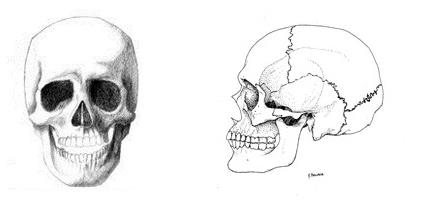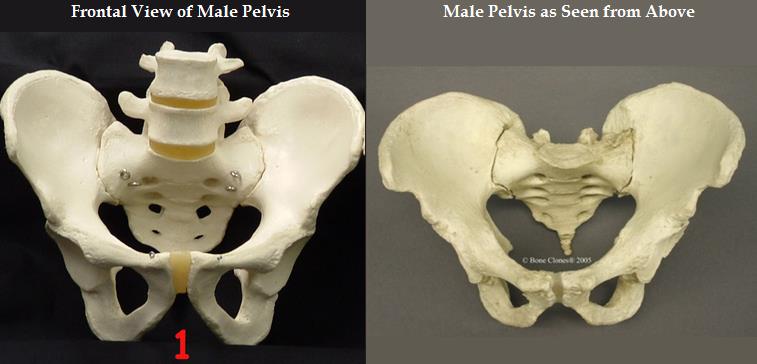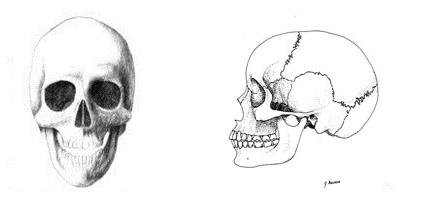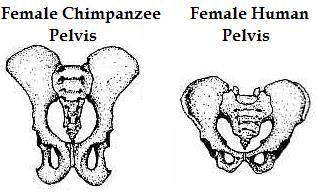The reason I am starting with the male is because it has formations the female skull does not. If you would look at the picture below, you can see the ridges on top of the orbits (eye sockets). This ridge is exclusively for the male skull. The mandible (lower jaw) is also a more square shape towards the chin. There is also another formation. When looking at the male skull from the side there is a notch towards the bottom of the skull, but not all the way towards the bottom. On the bottom of the skull that is more evidence that the skull is male. On the bottom there is something physical anthropologists call the Mastoid process. This part of the male skull is much larger than the female, which I will speak of soon.
Now there is another method to sex a skeleton, but this one requires much exposure to different skeletons to be able to sex them using this method. Reason being is that a lot of long bones (humerus, femur, tibia), look the same to the untrained eye. Those who have been exposed to bones can tell the sex just by the size of the long bones.
As promised, below on the left is a human female pelvis, and on the right the pelvis of a female chimpanzee (as we began bipedal our skulls grew, but we were once as small as permitted by the pelvis to slip through without any trouble).
Please feel free to leave me a comment either about this blog or on an anthropological subject you would like me to cover.





 RSS Feed
RSS Feed
